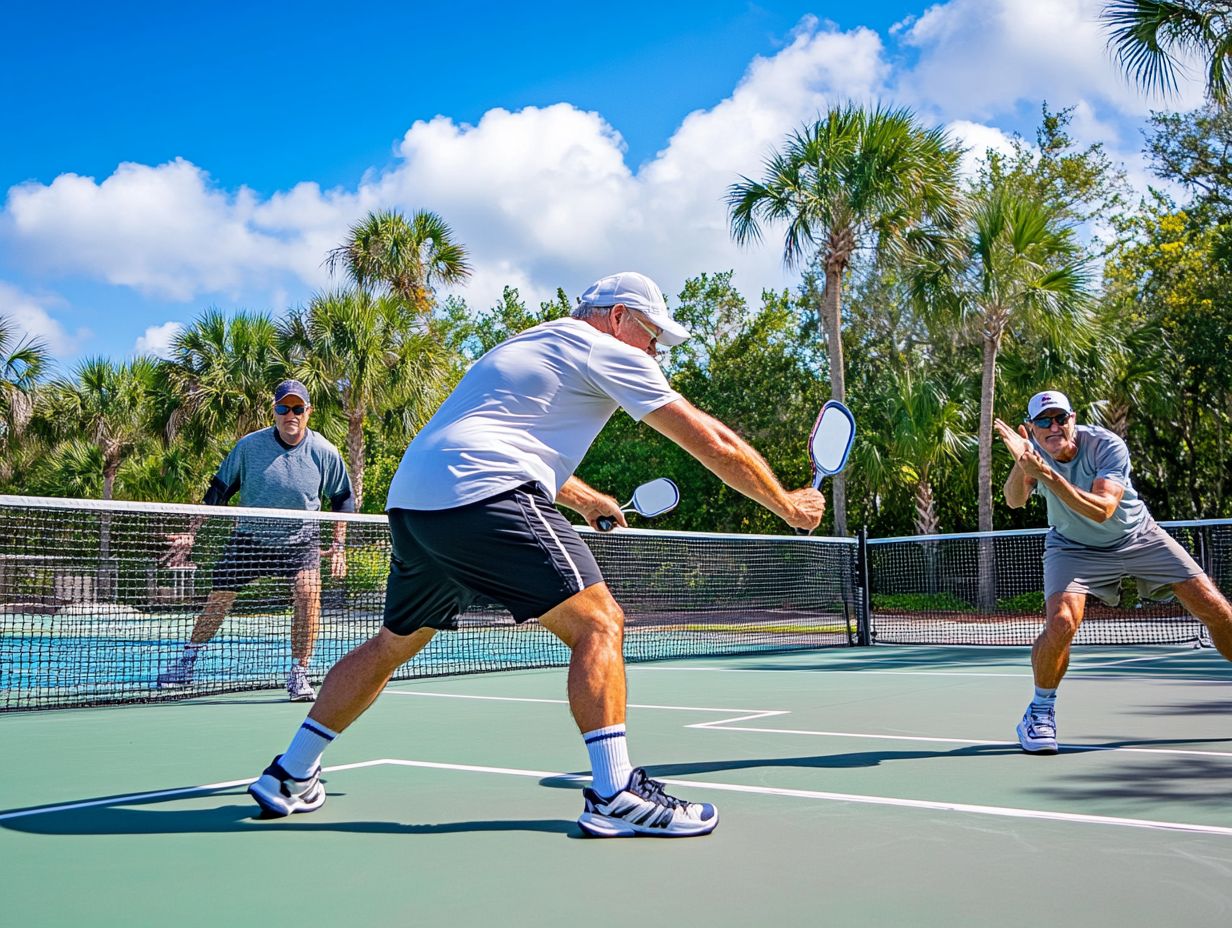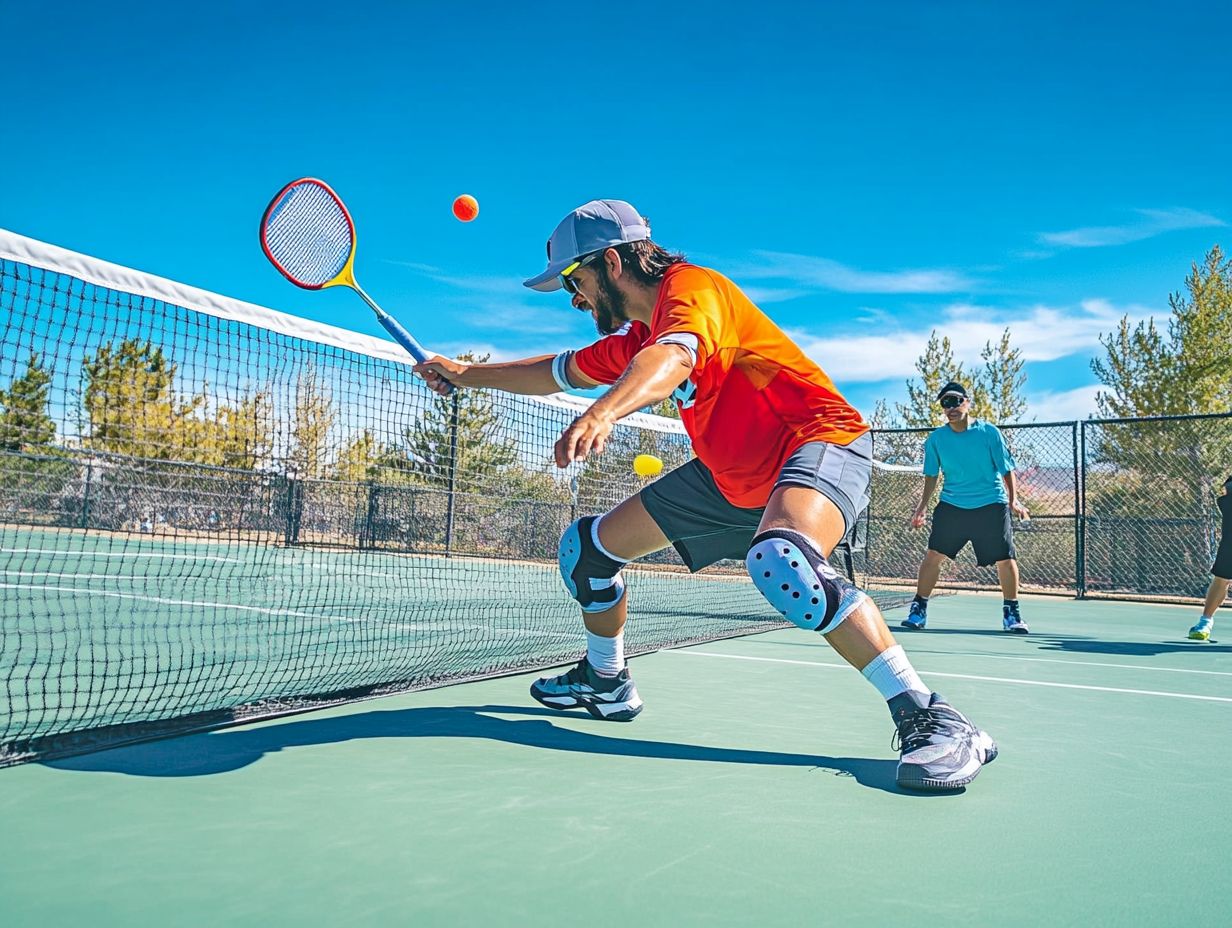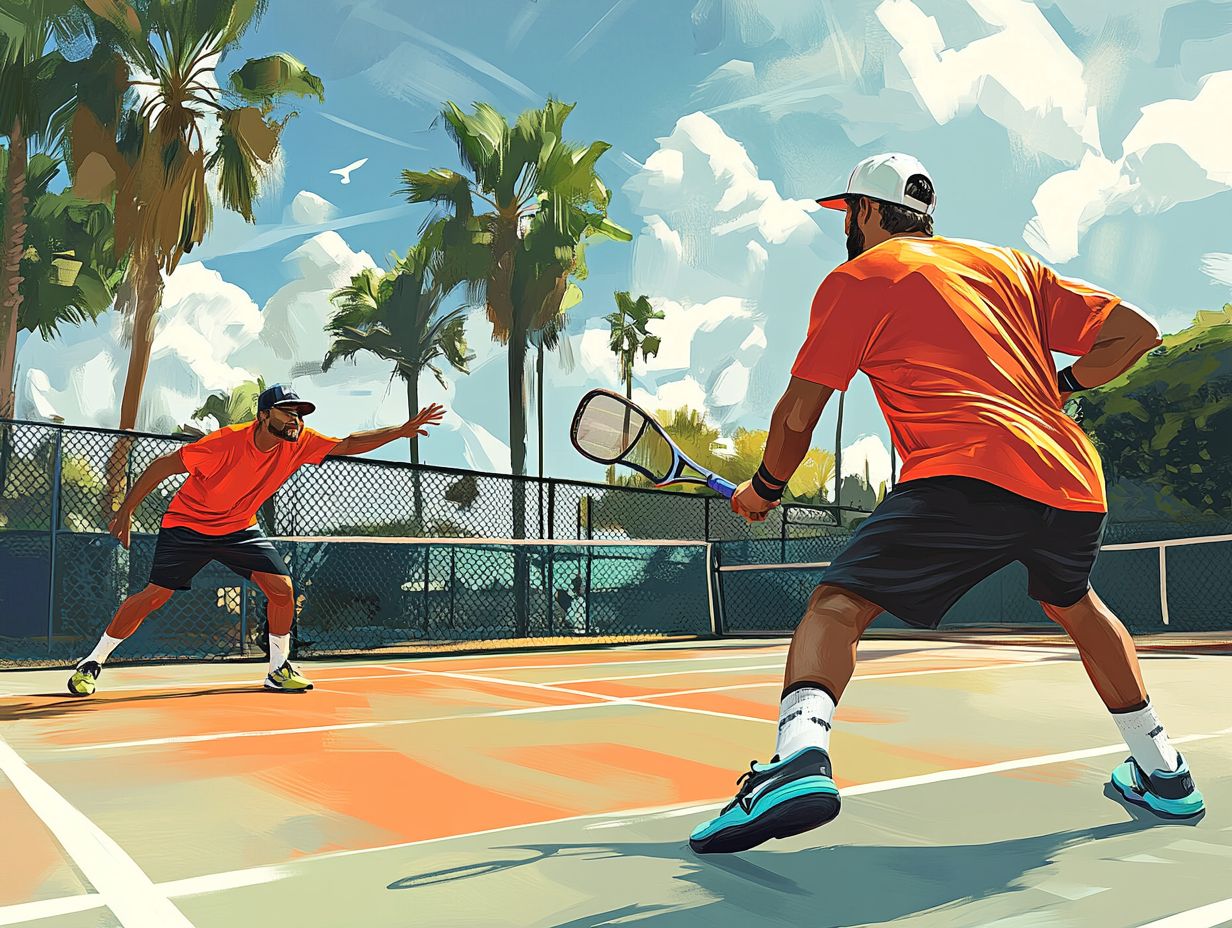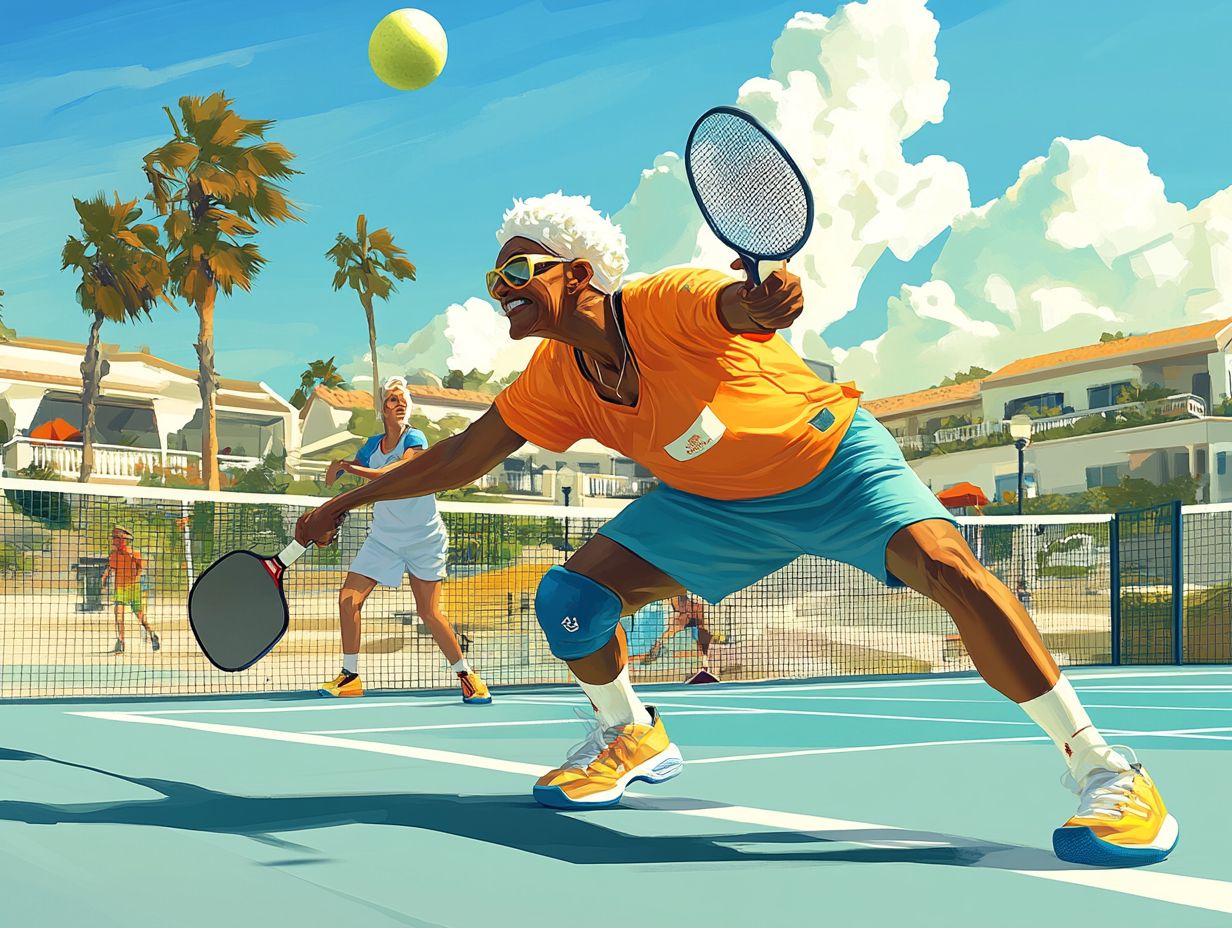Pickleball is a sport that combines elements of tennis, badminton, and ping pong, and it is rapidly gaining popularity among players of all ages.
As more people embrace this fast-paced game, it is essential to be aware of the potential dangers associated with it. This article outlines the most common injuries and their causes, emphasizes the importance of proper warm-ups, and examines equipment choices that can enhance safety.
Additionally, it offers techniques for safe play, recovery tips for injuries, and preventive measures to maintain long-term health. Whether you are a seasoned player or a novice, understanding these factors is crucial for enjoying pickleball without injury.
Understanding the Risks of Pickleball

Understanding the risks associated with pickleball is crucial for keeping players of all levels safe during the game. Pickleball is a fast-paced sport that combines elements of tennis, badminton, and table tennis. While it offers many benefits, it also presents unique challenges, and players may encounter a variety of injuries if proper precautions are not taken.
The primary risks of pickleball include:
- overuse injuries
- wrist injuries
- ankle sprains
- knee injuries
These injuries can significantly diminish a player’s enjoyment and performance in the game. By being aware of the risks related to pickleball, players can implement injury prevention strategies to enhance their recreational and competitive experiences.
Common Injuries and Causes
Common injuries in pickleball include wrist injuries, ankle sprains, and knee injuries, which often result from repetitive motions and improper techniques. Understanding these injuries can help players identify risk factors and implement preventive measures to stay safe and active.
Many of these injuries stem from overuse, occurring when the body cannot cope with the intensity of play without adequate recovery time. Additionally, players may sustain injuries due to improper form while serving or volleying, which places extra strain on vulnerable areas.
To reduce these risks, players should engage in comprehensive training that emphasizes proper movement mechanics and physical conditioning. Key components of injury prevention include regular fitness routines that build strength and flexibility, as well as increased awareness of the body’s signals to ensure players do not exceed their limitations.
Proper Warm-Up and Stretching
Proper warm-up and stretching routines are essential for injury prevention among pickleball players. These practices prepare the body for the physical demands of the sport while also enhancing flexibility, muscle strength, and overall performance.
Engaging in targeted warm-up exercises can significantly reduce the risk of injuries such as muscle strains and tears, ensuring that players are physically conditioned and ready to compete.
Preventing Muscle Strains and Tears

Muscle strains and tears are common injuries in pickleball, making prevention essential for both peak performance and long-term participation. Because pickleball games often involve quick movements and unpredictable plays, a proper warm-up that includes dynamically stretching is important for improving muscle elasticity and joint stability.
An effective warm-up should incorporate movements such as leg swings, arm circles, and torso twists, which prepare the muscles for play and promote blood circulation. Recognizing the significance of physical conditioning, players should engage in exercises that enhance core stability and lower body strength, both of which are necessary for quick lateral movements on the court.
Regularly incorporating these warm-up exercises during practice sessions will not only improve performance but also significantly reduce the risk of strains. Additionally, players should pay attention to their bodies and acknowledge any discomfort as soon as it arises, as early intervention can make a significant difference.
Equipment and Court Safety
Ensuring equipment and court safety in pickleball is crucial, as the right gear and playing surface significantly affect players’ performance and the risk of injury. Wearing appropriate shoes designed for speed and agility, along with maintaining well-kept courts, can help reduce the likelihood of common injuries, such as ankle sprains and overuse injuries. This creates a safer environment for all players.
Choosing the Right Gear
Quality equipment and gear in pickleball are essential for both enhancing performance and ensuring safety. High-quality paddles, shoes, and protective gear can help prevent injuries and improve overall comfort.
A paddle that is well-suited to a player’s style can enhance ball control and shot accuracy, thereby boosting the player’s confidence. Pickleball shoes are designed with a non-marking sole suitable for the playing surface and cushioned support to reduce the risk of slipping and falling on the court.
Additionally, protective gear such as knee pads and wrist braces offers extra stability, which helps minimize the risk of strains and sprains. Overall, investing in quality equipment not only enhances the overall playing experience but also increases the likelihood of a longer and more enjoyable journey by reducing the risks of injury.
Maintaining a Safe Playing Surface

The safety of the playing surface is a crucial factor in minimizing injury risks in pickleball. A court that is uneven, poorly maintained, or hastily constructed can present hazards that may lead to accidents and injuries among players.
Regular inspections and maintenance of pickleball court surfaces are essential to ensure a level playing field, promoting safe and enjoyable play. Adhering to best practices such as regular cleaning, prompt repairs of cracks or surface damage, and ensuring proper drainage can significantly enhance player safety.
Additionally, using materials that provide optimal grip and cushioning can help protect against slips and falls. Frequent assessments enable facilities to identify potential hazards early, allowing for corrective actions to be taken before accidents occur.
By implementing these maintenance practices, players can benefit from a consistent and safe environment that not only enhances performance but also reduces the likelihood of injury while playing.
Techniques for Safe Play
Safe play techniques are essential for all pickleball players, as they help reduce the risk of injuries and enhance the overall experience of the game.
By employing proper techniques, maintaining appropriate movement, and being aware of their surroundings, players can minimize the likelihood of common injuries and ensure they adhere to safe play guidelines.
Proper Form and Movement
Proper form and movement techniques in pickleball are essential for minimizing injury risks and enhancing overall performance. When players utilize correct form, they can execute shots efficiently while maintaining their balance and stability.
Conversely, poor form can result in various injuries, ranging from knee injuries to ankle sprains. Therefore, it is crucial for players to understand the significance of proper technique, which is not complicated.
Focusing on key elements such as footwork, posture, and follow-through can significantly improve both safety and skill. For instance, adopting a proper ready stance ensures that players are well-positioned to move quickly and react to the ball.
Being aware of correct lateral movements can help prevent awkward positions that may lead to injury. Additionally, regular drills aimed at strengthening the legs and core muscles can help prevent strain.
The importance of safety in pickleball cannot be overstated. In a sport that demands balance and rapid lateral movements, the relationship between technique and player safety is paramount.
Communicating with Your Partner

Effective communication with your partner is one of the most critical aspects of safe play in pickleball. It fosters better teamwork and enhances overall awareness on the court, which in turn decreases the likelihood of injuries in this fast-paced sport.
Good communication enables players to anticipate each other’s movements, leading to improved shot selection and positioning. In a game that requires quick movements and reflexes, understanding partner dynamics becomes even more essential.
By openly sharing their thoughts and strategies, players can build trust, enhance their effectiveness, and reduce the risk of injury associated with poor communication. This level of communication keeps players alert and allows them to respond appropriately to changing game situations, resulting in a smoother flow of play.
Recovering from Injuries
Pickleball injury recovery refers to the process players undergo to heal from injuries sustained during the sport and to return to play. A comprehensive recovery plan that incorporates appropriate treatment and rehabilitation strategies can help players regain maximum functionality after a pickleball injury while also addressing any risk factors that may contribute to future injuries.
Treatment and Rehabilitation
Effective treatment and rehabilitation for players injured while playing pickleball are essential for restoring strength, flexibility, and functionality, as well as for facilitating a safe return to the game. Injured players who participate in guided rehabilitation exercises and physical therapy have a higher likelihood of recovery compared to those who do not.
Utilizing various treatment modalities, such as manual therapy, ultrasound, and strengthening exercises, can enhance recovery outcomes. Recovery programs specifically designed for pickleball injuries take into account the unique aspects of the game and assist players in returning to competition.
Additionally, the rehabilitation program should include education on injury prevention strategies to help athletes minimize the risk of future injuries. Comprehensive rehabilitation not only aids in the healing of injuries such as sprained ankles, shoulder strains, or tennis elbow but also supports long-term health and well-being, enabling players to safely continue enjoying the sport they love.
Preventive Measures for Long-Term Health
Achieving long-term health and fitness for pickleball players requires the implementation of preventive measures. These measures—encompassing physical conditioning, injury prevention, and mindfulness of technique during play—are essential for maintaining players’ physical well-being and ensuring their safety from injuries over extended periods.
Staying Active and Injury-Free
The primary goal of pickleball players is to stay active and injury-free, as participating in fitness activities enhances overall health and performance.
Cross-training, strength training, and flexibility training can help players build resilience and reduce the risk of injuries during the game. Incorporating a variety of activities, such as yoga, Pilates, or simple stretching routines, can significantly improve balance and coordination, which are essential for quick foot movements in pickleball.
Cardiovascular workouts, like jogging or cycling, boost endurance and stamina, ensuring that athletes maintain their energy levels throughout long matches. These fitness routines not only support physical health but also promote mental well-being, allowing athletes to focus on their performance during games.
By prioritizing a balanced and active lifestyle, athletes can maximize their performance while enjoying the long-term benefits of physical fitness.

Pickleball’s more than a game to me—it’s a passion. I write, sharing its highs and lows, the thrills and the lessons. Some tales might draw you to the court, while others give a hint of the game’s magic. So, curious about my journey? Ready to dive deep into the world of pickleball with me? Let’s go.
